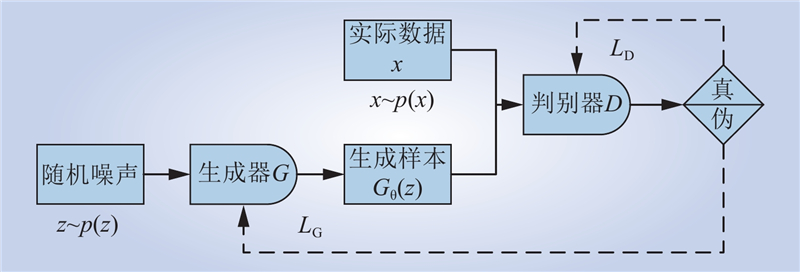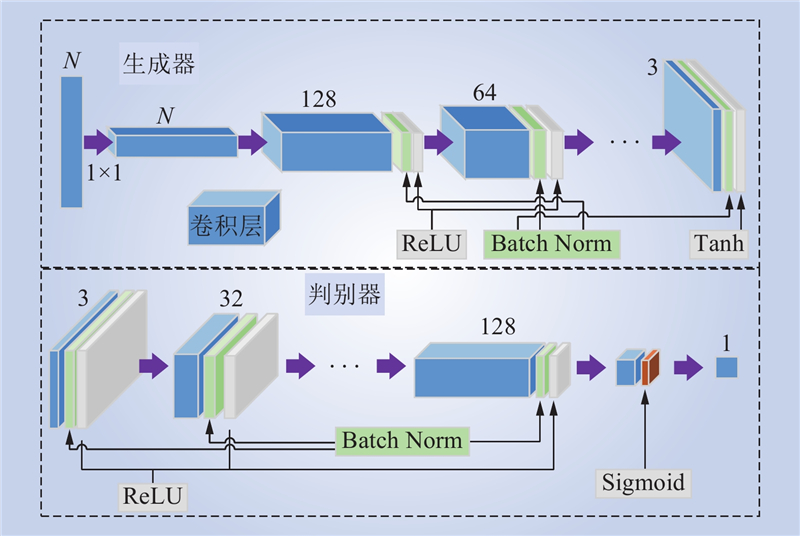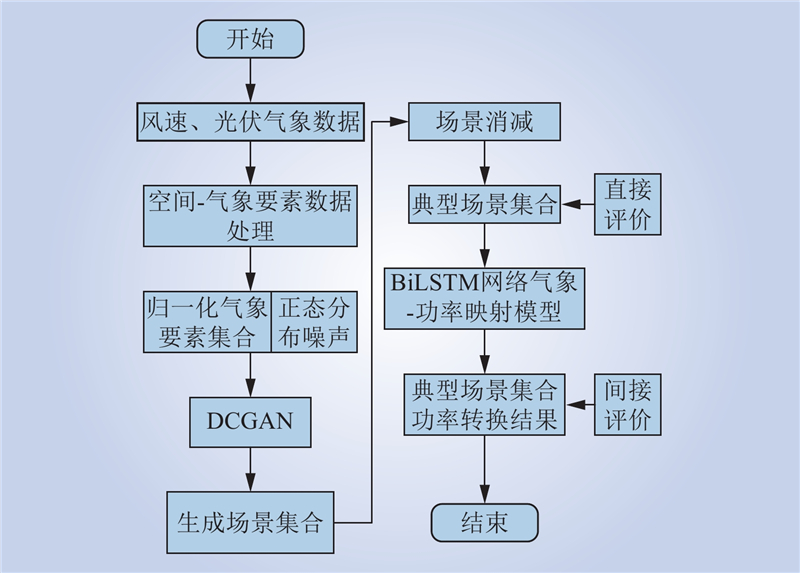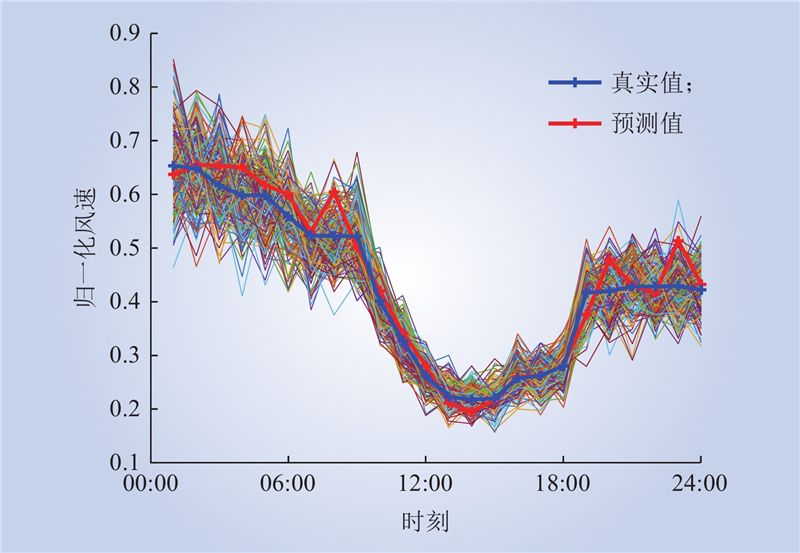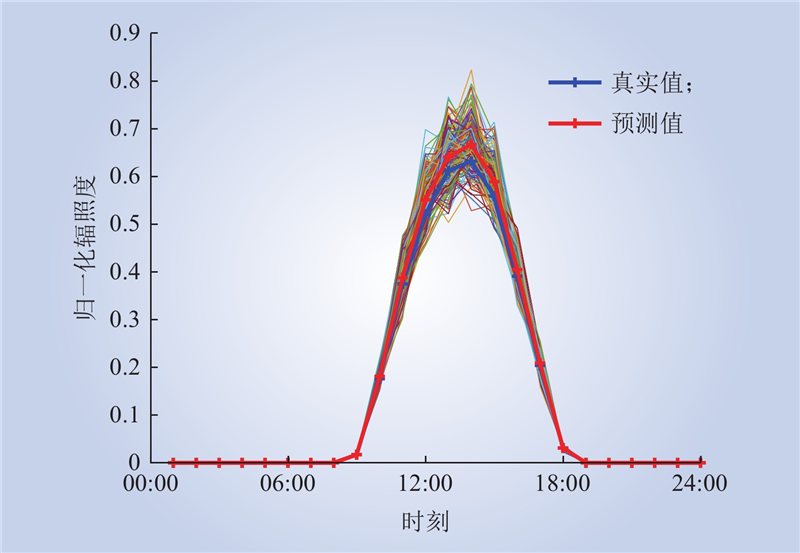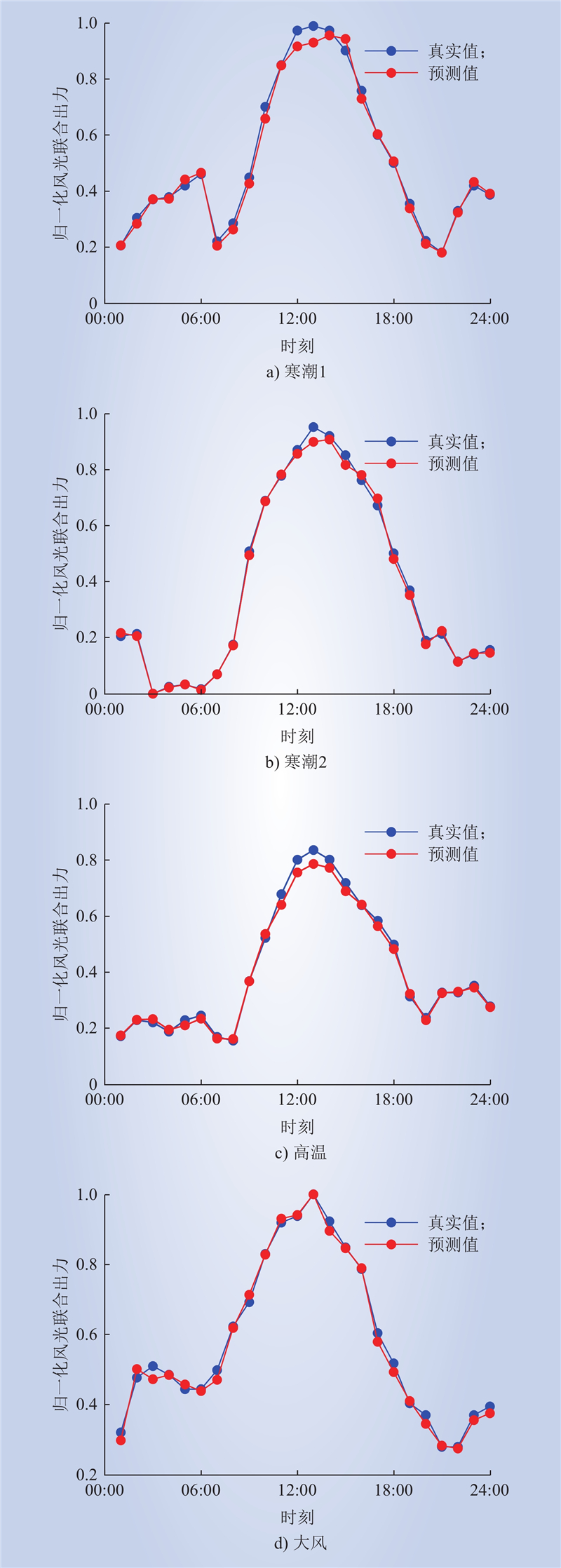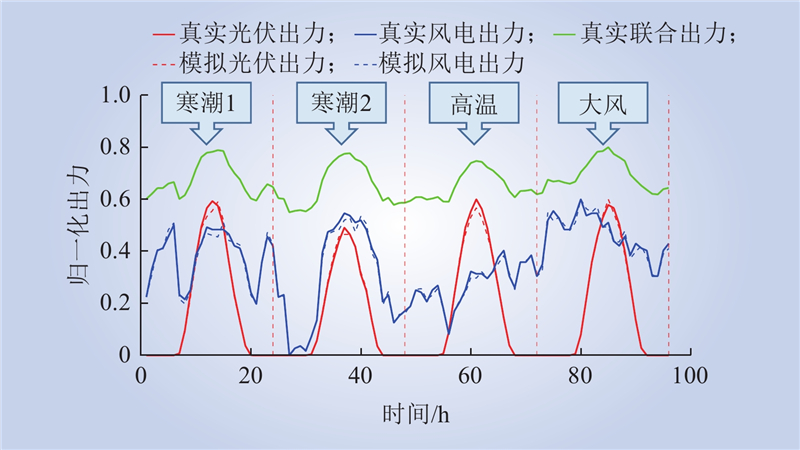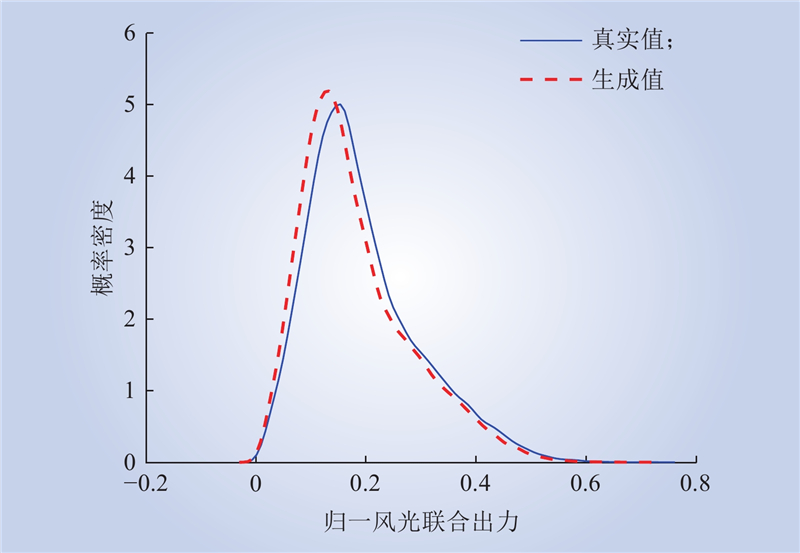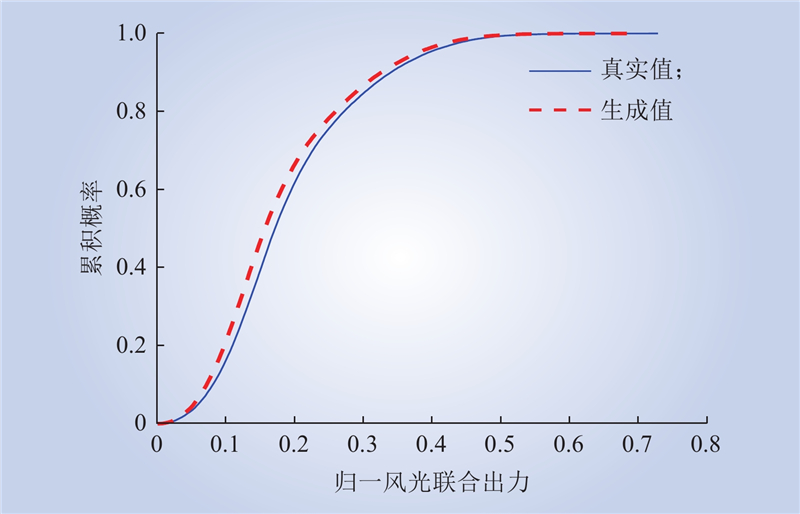| 1 |
LI M L, YANG M, YU Y X, et al. Short-term wind power forecast based on continuous conditional random field[J]. IEEE Transactions on Power Systems, 2024, 39 (1): 2185- 2197.
DOI
|
| 2 |
胡源, 薛松, 杨素, 等. 综合能源背景下的配电网多场景规划[J]. 中国电力, 2021, 54 (4): 175- 184.
|
|
HU Yuan, XUE Song, YANG Su, et al. Multi-scenario planning of distribution network in the context of integrated energy[J]. Electric Power, 2021, 54 (4): 175- 184.
|
| 3 |
薛禹胜, 雷兴, 薛峰, 等. 关于风电不确定性对电力系统影响的评述[J]. 中国电机工程学报, 2014, 34 (29): 5029- 5040.
|
|
XUE Yusheng, LEI Xing, XUE Feng, et al. A review on impacts of wind power uncertainties on power systems[J]. Proceedings of the CSEE, 2014, 34 (29): 5029- 5040.
|
| 4 |
ZHANG Y M, ZHANG X, JI X Q, et al. Optimization of integrated energy system considering transmission and distribution network interconnection and energy transmission dynamic characteristics[J]. International Journal of Electrical Power & Energy Systems, 2023, 153, 109357.
|
| 5 |
任景, 高敏, 程松, 等. 面向新能源不确定性的西北电力电量平衡机制[J]. 中国电力, 2023, 56 (9): 66- 78.
|
|
REN Jing, GAO Min, CHENG Song, et al. A balance method for power supply-demand adapting to high uncertainties of renewable energy in northwest power grid[J]. Electric Power, 2023, 56 (9): 66- 78.
|
| 6 |
李湃, 王伟胜, 刘纯, 等. 张北柔性直流电网工程新能源与抽蓄电站配置方案运行经济性评估[J]. 中国电机工程学报, 2018, 38 (24): 7206- 7214, 7447.
|
|
LI Pai, WANG Weisheng, LIU Chun, et al. Economic assessment of Zhangbei VSC-based DC grid planning scheme with integration of renewable energy and pumped-hydro storage power station[J]. Proceedings of the CSEE, 2018, 38 (24): 7206- 7214, 7447.
|
| 7 |
曹慧秋, 徐箭, 洪敏, 等. 基于通用分布的风电功率出力动态场景生成方法[J]. 电测与仪表, 2018, 55 (24): 6- 10.
DOI
|
|
CAO Huiqiu, XU Jian, HONG Min, et al. A method of dynamic scenarios generation of wind power output based on versatile distribution[J]. Electrical Measurement & Instrumentation, 2018, 55 (24): 6- 10.
DOI
|
| 8 |
MAKAROV Y V, ETINGOV P V, MA J, et al. Incorporating uncertainty of wind power generation forecast into power system operation, dispatch, and unit commitment procedures[J]. IEEE Transactions on Sustainable Energy, 2011, 2 (4): 433- 442.
DOI
|
| 9 |
MA X Y, SUN Y Z, FANG H L. Scenario generation of wind power based on statistical uncertainty and variability[J]. IEEE Transactions on Sustainable Energy, 2013, 4 (4): 894- 904.
DOI
|
| 10 |
李丹, 梁云嫣, 缪书唯, 等. 基于高斯混合聚类和改进条件变分自编码的多风电场功率日场景生成方法[J]. 中国电力, 2024, 57 (12): 17- 29.
|
|
LI Dan, LIANG Yunyan, MIAO Shuwei, et al. Daily power scenario generation method for multiple wind farms based on Gaussian mixture clustering and improved conditional variational autoencoder[J]. Electric Power, 2024, 57 (12): 17- 29.
|
| 11 |
赵书强, 金天然, 李志伟, 等. 考虑时空相关性的多风电场出力场景生成方法[J]. 电网技术, 2019, 43 (11): 3997- 4004.
|
|
ZHAO Shuqiang, JIN Tianran, LI Zhiwei, et al. Wind power scenario generation for multiple wind farms considering temporal and spatial correlations[J]. Power System Technology, 2019, 43 (11): 3997- 4004.
|
| 12 |
邹斌, 李冬. 基于有效容量分布的含风电场电力系统随机生产模拟[J]. 中国电机工程学报, 2012, 32 (7): 23- 31, 187.
|
|
ZOU Bin, LI Dong. Power system probabilistic production simulation with wind generation based on available capacity distribution[J]. Proceedings of the CSEE, 2012, 32 (7): 23- 31, 187.
|
| 13 |
LEE D, BALDICK R. Future wind power scenario synthesis through power spectral density analysis[J]. IEEE Transactions on Smart Grid, 2014, 5 (1): 490- 500.
DOI
|
| 14 |
PANDŽIĆ H, DVORKIN Y, QIU T, et al. Toward cost-efficient and reliable unit commitment under uncertainty[J]. IEEE Transactions on Power Systems, 2016, 31 (2): 970- 982.
DOI
|
| 15 |
廖文龙, 杨德昌, 葛磊蛟, 等. 基于像素卷积生成网络的可再生能源场景生成[J]. 高电压技术, 2022, 48 (4): 1320- 1331.
|
|
LIAO Wenlong, YANG Dechang, GE Leijiao, et al. Renewable energy scenario generation based on pixel convolutional generative networks[J]. High Voltage Engineering, 2022, 48 (4): 1320- 1331.
|
| 16 |
王守相, 陈海文, 李小平, 等. 风电和光伏随机场景生成的条件变分自动编码器方法[J]. 电网技术, 2018, 42 (6): 1860- 1869.
|
|
WANG Shouxiang, CHEN Haiwen, LI Xiaoping, et al. Conditional variational automatic encoder method for stochastic scenario generation of wind power and photovoltaic system[J]. Power System Technology, 2018, 42 (6): 1860- 1869.
|
| 17 |
JIANG C M, MAO Y F, CHAI Y, et al. Scenario generation for wind power using improved generative adversarial networks[J]. IEEE Access, 2018, 6, 62193- 62203.
DOI
|
| 18 |
李康平, 张展耀, 王飞, 等. 基于GAN场景模拟与条件风险价值的独立型微网容量随机优化配置模型[J]. 电网技术, 2019, 43 (5): 1717- 1725.
|
|
LI Kangping, ZHANG Zhanyao, WANG Fei, et al. Stochastic optimization model of capacity configuration for stand-alone microgrid based on scenario simulation using GAN and conditional value at risk[J]. Power System Technology, 2019, 43 (5): 1717- 1725.
|
| 19 |
尹清青, 何涛, 吴馨, 等. 基于生成对抗网络的二次屏柜交直流侵入信号检测方法[J]. 东北电力大学学报, 2024, 44 (4): 21- 27.
|
|
YIN Qingqing, HE Tao, WU Xin, et al. AC-DC intrusion signal detection method based on generative adversarial network for secondary panel cabinet[J]. Journal of Northeast Electric Power University, 2024, 44 (4): 21- 27.
|
| 20 |
李宝琴, 吴俊勇, 强子玥, 等. 基于改进DCGAN的电力系统暂态稳定增强型自适应评估[J]. 电力系统自动化, 2022, 46 (2): 73- 82.
|
|
LI Baoqin, WU Junyong, QIANG Ziyue, et al. Enhanced adaptive assessment on transient stability of power system based on improved deep convolutional generative adversarial network[J]. Automation of Electric Power Systems, 2022, 46 (2): 73- 82.
|
| 21 |
宋宗耘, 张健, 牛东晓, 等. 基于模糊密度K-medoids聚类和NSGA-Ⅱ算法的绿色分时电价优化研究[J]. 智慧电力, 2019, 47 (3): 38- 45.
|
|
SONG Zongyun, ZHANG Jian, NIU Dongxiao, et al. Green time of use electricity price optimization based on fuzzy density K-medoids algorithm and NSGA-Ⅱ[J]. Smart Power, 2019, 47 (3): 38- 45.
|
| 22 |
KONG X Y, XIAO J, LIU D H, et al. Robust stochastic optimal dispatching method of multi-energy virtual power plant considering multiple uncertainties[J]. Applied Energy, 2020, 279, 115707.
DOI
|
| 23 |
ZHU J, ZHAO Z Y, ZHENG X R, et al. Time-series power forecasting for wind and solar energy based on the SL-transformer[J]. Energies, 2023, 16 (22): 7610.
DOI
|
| 24 |
PURLU M, TURKAY B E. Optimal allocation of renewable distributed generations using heuristic methods to minimize annual energy losses and voltage deviation index[J]. IEEE Access, 2022, 10, 21455- 21474.
DOI
|
| 25 |
杨皓然, 杨茂, 苏欣. 计及预测误差时空-条件相依特性的日内光伏出力区间预测方法[J]. 南方电网技术, 2023, 17 (2): 128- 136.
|
|
YANG Haoran, YANG Mao, SU Xin. Intraday photovoltaic output interval prediction method considering the spatiotemporal-conditional dependence of prediction error[J]. Southern Power System Technology, 2023, 17 (2): 128- 136.
|


